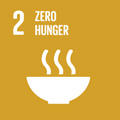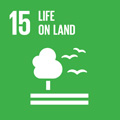- Docente: Claudio Ratti
- Credits: 8
- SSD: AGR/12
- Language: Italian
- Moduli: Claudio Ratti (Modulo Mod 1) Marina Collina (Modulo Mod 2)
- Teaching Mode: Traditional lectures (Modulo Mod 1) Traditional lectures (Modulo Mod 2)
- Campus: Cesena
- Corso: First cycle degree programme (L) in Viticulture and Enology (cod. 8527)
-
from Sep 17, 2024 to Dec 05, 2024
-
from Oct 15, 2024 to Dec 10, 2024
Learning outcomes
By the end of the course, the student will be familiar with and able to examine the symptomatic, epidemiological aspects, biological cycles, and diagnosis of the main grape diseases to establish correct plant protection procedures. They will operate critically and with independent judgment.
Course contents
MODULE 1 (60 HOURS)
PLANT DISEASES - GENERAL ASPECTS (4 hours)
Plant protection at international, national, and regional levels. Concept of quarantine organism and phytosanitary certification.
IMPORTANCE OF FUNGAL DISEASES IN AGRICULTURE (5 HOURS)Students will learn the causes and importance of fungal diseases and the reasons for the increase in fungal diseases over the past 40 years. Major physiological disorders and main methods for controlling fungal diseases will be covered.
GENERALITIES ABOUT FUNGI (MORPHOLOGY, PHYSIOLOGY, AND BIOLOGY) (6 HOURS)The biology, general and reproductive characteristics of oomycetes, zygomycetes, ascomycetes, basidiomycetes. Nutritional needs of fungi (saprophytic, parasitic, and symbiotic fungi; ectoparasitism and endoparasitism; monophagy, polyphagy, facultative parasitism, obligatory parasitism, monocyclic and polycyclic fungi).
GENERALITIES ON FORMS OF DISEASE (5 HOURS)Characteristics and forms of disease (appearance modes and incubation times), infection process (initial contact, penetration, colonization, evasion), main symptomatic expressions, diagnostic methods (visual examination, molecular methods, Koch's postulates), pathogen resistance mechanisms (passive structural and chemical defenses, active defenses), and pathogen recognition (elicitation, systemic resistance).
SPECIFIC DISEASES OF GRAPEVINE (10 HOURS)Symptoms and damages of anthracnose, powdery mildew, root rots, grey mold or botrytis, downy mildew, vascular wilts, acid rot, black rot, and ochratoxin-producing fungi.
GRAPE DISEASES CAUSED BY VIRUSES, VIROIDS, BACTERIA AND PHYTOPLASMAS (10 hours)Generalities about phytoviruses, vine viral and virus-like diseases: Structure, genomic expression, replication, movement within the plant, transmission methods, natural vectors, control methods. Major viral and virus-like diseases (fan-leaf, leaf-roll, rugose wood, infectious fleck, Pinot gris virus, graft incompatibility, enations, necrosis, and vein mosaic). Phytopathogenic prokaryotes of the grapevine: General aspect of bacteria, structure of phytoplasmas, localization in plant tissues, symptoms, methods of natural diffusion, prevention and managing of Flavescence doree and Bois noir diseases.
DIAGNOSIS OF VINE DISEASES (20 hours)Diagnosis methods for fungi, bacteria, viruses, viroids, and phytoplasmas (4 hours). Overview of biological and serological diagnosis. Molecular diagnosis: Molecular hybridization, gel and membrane electrophoresis, hot and cold molecular probes, PCR, Real-Time PCR, LAMP, Digital PCR, next-generation sequencing (NGS).
Practical sessions (16 hours): Students will experiment with various serological and molecular diagnostic methods discussed during lectures. Practical use of biological diagnostics will be deepened during visits to mother plant maintenance greenhouses and thermotherapy rooms at CAV Tebano (laboratories and greenhouses). Weather permitting, vineyard inspections will be conducted at Tebano to identify and recognize phytopathological symptoms.
MODULE 2 (20 HOURS)
GRAPE PROTECTION - GENERALITIES (10 hours)
General overview of plant adversities and protection: Technical peculiarities and current orientations of protection. Available means for protecting plants from diseases: Legislative, agronomic, physical, genetic, biological, and chemical means. Evolution of phytosanitary protection: From scheduled treatments to integrated and organic production. Overview of recent European phytosanitary regulations (authorization and use): Selection and homologation of control means, Regulation 1107/2009, harmonization of pesticide residues, Regulation 396/2005, rationalization and optimization of intervention strategies, Directive 128/2009: sustainable use of pesticides.
GRAPE PROTECTION - AGROCHEMICALS (5 hours)Toxicological aspects of agrochemicals: Hazard and risk, evaluation of substance toxicity, risk assessment for consumers, operators, and the environment. Content and importance of agrochemical labels: Technical characteristics of agrochemicals and label reading. Overview of agrochemical formulations: Active substance, adjuvants, co-formulants. Types of formulations available on the market (characteristics, advantages, disadvantages).
GRAPE PROTECTION AGAINST MAIN FUNGAL DISEASES (5 hours)Based on acquired knowledge about epidemiology, specific aspects of protection against downy mildew, powdery mildew, and botrytis will be addressed. Also, protection against black rot, phomopsis, and esca disease will be discussed.
Readings/Bibliography
- Saracco C. "Le malattie della vite". Calderini Edagricole, 2001.
- "Elementi di Patologia Vegetale" - G. Belli - Piccin Editore, 2011.
- "Plant Pathology" Fifth Edition - George N. Agrios – Academic Press, 2004.
- Material presented during lectures will be available to students in PDF format.
Teaching methods
During the lectures, general issues related to the diagnosis of vine diseases will be discussed in relation to the symptoms presented by the plant and the technological or biological supports available for identifying the disease's etiology. Identification of the pathogen combined with biological knowledge will form the basis for indicating appropriate prevention and/or control strategies. The course will be accompanied by practical laboratory exercises to simulate diagnostic procedures used in modern phytopathological research laboratories and to demonstrate various practical problems that may arise during a diagnostic procedure.
Assessment methods
The assessment is oral and will include a series of questions aimed at verifying the student's theoretical knowledge of the issues presented in the lectures. Specifically, 3-4 questions will be asked about the biological cycle of the pathogens covered, the diagnosis of major diseases, and the modes of disease spread closely linked to the correct procedures for managing plant protection.
Teaching tools
Video projector, PCs, laboratories equipped with the most modern instruments for phyto-pathological diagnosis.
Office hours
See the website of Claudio Ratti
See the website of Marina Collina
SDGs




This teaching activity contributes to the achievement of the Sustainable Development Goals of the UN 2030 Agenda.
